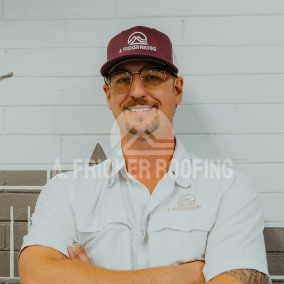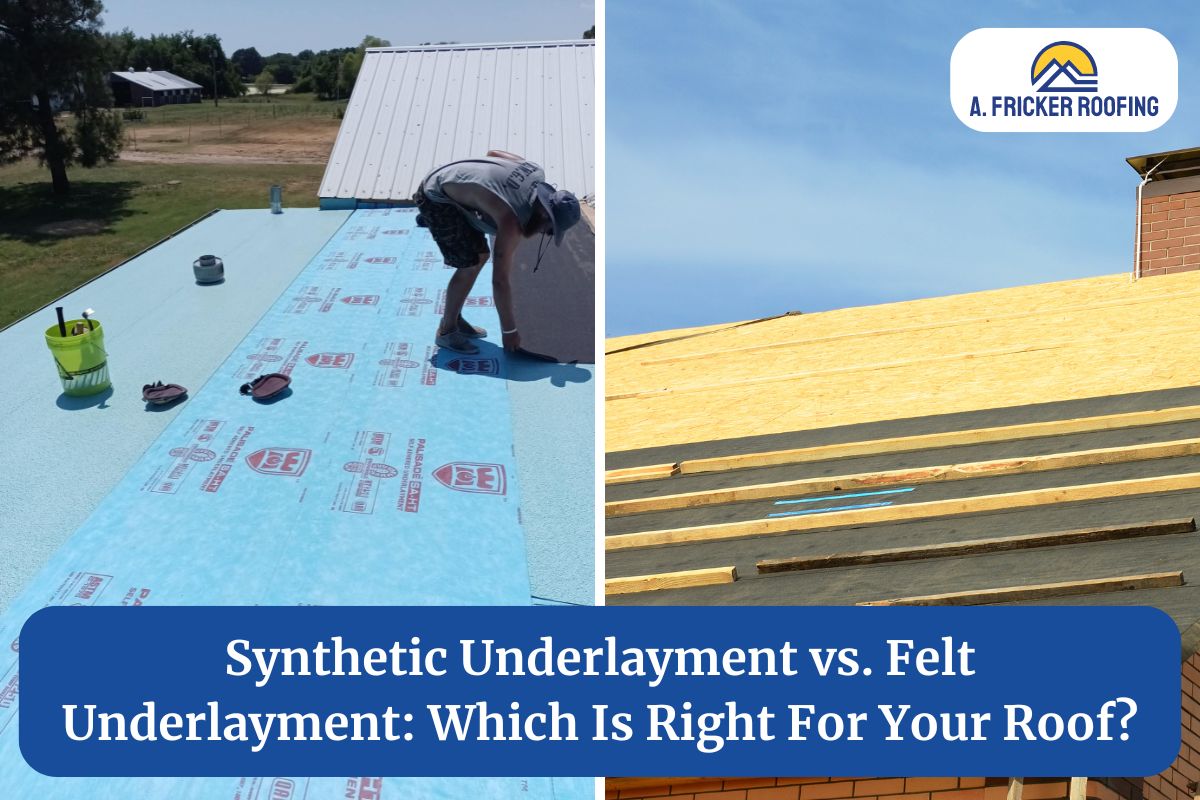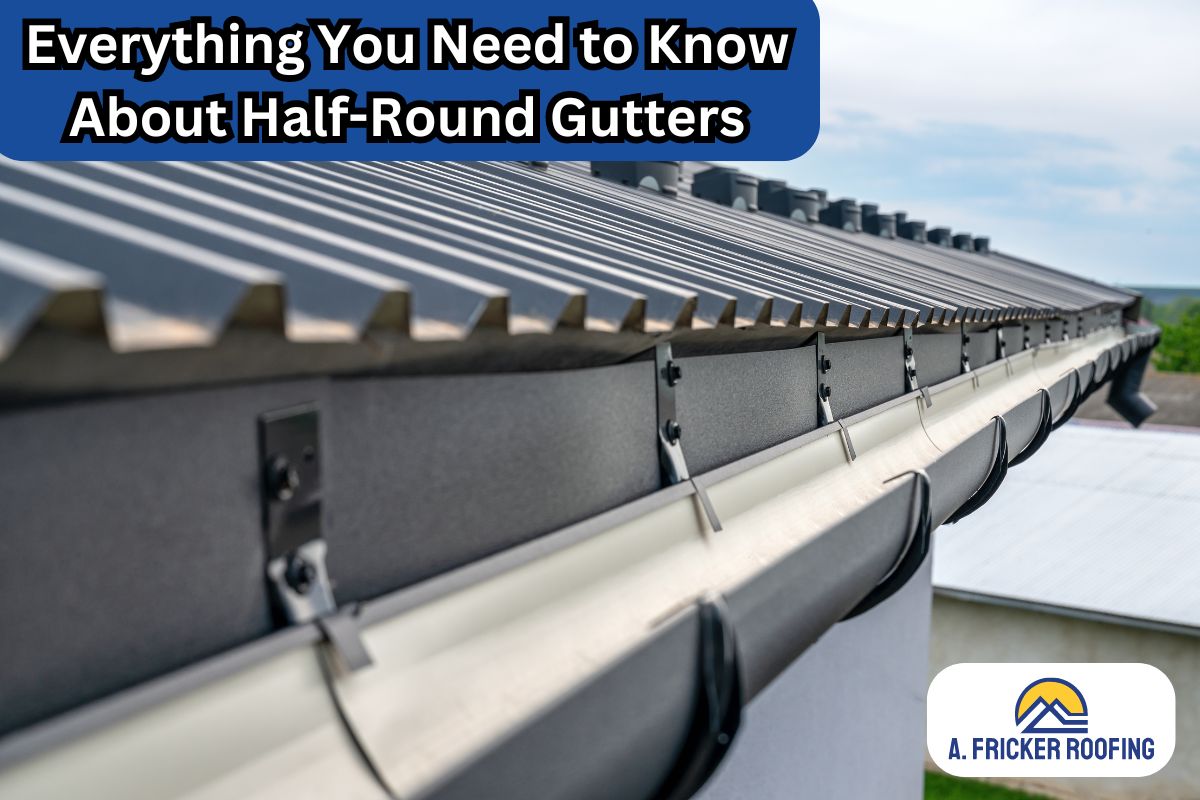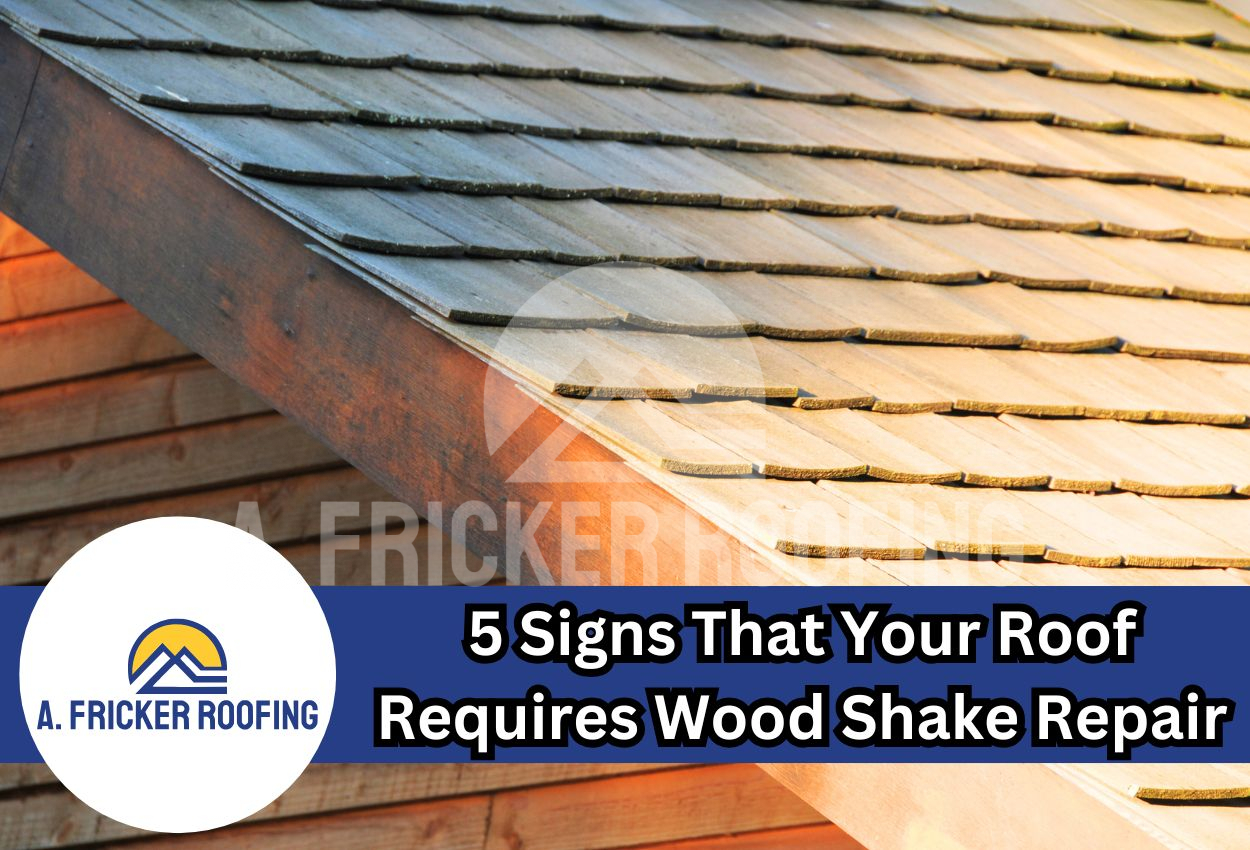A house is more than just a roof over your head. It’s a complex structure designed to withstand harsh weather while keeping you and your loved ones dry and comfortable. One essential element in maintaining the integrity of your home is something you may not be familiar with: a drip edge. This seemingly insignificant, yet surprisingly important detail can impact your roofing system. Let’s explore what a drip edge on a roof really is, why it’s crucial, and the various types available.
An Introduction to Drip Edges
Simply put, the main role of a drip edge is to do exactly what its name suggests: divert rainwater away, essentially causing it to drip off the eaves and into your gutters. This L-shaped metal strip is installed along the edges of a roof, with half of it beneath the roofing felt paper and shingles. It enables the water runoff system to work efficiently while preventing sidewall leaks. But that’s not all, because in addition to preventing water from seeping beneath your shingles, this often-overlooked component also effectively combats wind-driven rain and snow!
Understanding The Role of A Drip Edge in Roofing

If you’ve ever asked yourself what the purpose of a drip edge is or how it works, this section will provide some clarity. Like many components of a roofing system, the purpose of a drip edge extends beyond what meets the eye.
A drip edge is a thin strip of non-corrosive metal that is installed along the edges of a roof, specifically where the shingles meet the gutters. Its primary function is to direct water away from the fascia and to prevent wind-driven rain from getting beneath the underlayment.
In addition to this, drip edges also act as a barrier to keep pests from entering your space by sealing off potential entrance points around eaves and gable ends. They also help prevent loose or ripped shingles from being further damaged by stormy conditions.
Overall, properly designed drip edges help minimize unnecessary movement between the fascia and deck boards, protecting both components from possible disfigurement caused by these movements or extreme weather conditions.
Different Types of Drip Edge Materials
When it comes to drip edges, it’s important to recognize that they come in a diverse range of materials. Each material carries with it unique properties and characteristics. Let’s dive into the three key types:
Aluminum
The use of aluminum is highly favored by roofing professionals for creating drip edges due to its natural resistance to rust, which significantly prolongs its lifespan compared to other materials. Aluminum is also highly flexible, making it easier to shape and mold around any irregularities on the roof’s structure. Its wide range of available colors allows for seamless customization to match your existing roof, ensuring aesthetic harmony. However, it’s crucial to ensure that the aluminum used is thick enough to resist bending during installation, as this can affect its performance.
Galvanized Steel
Galvanized steel is also a significant material used for many purposes in the industry. Through a coating process involving a layer of zinc oxide on standard steel, this ordinary material is transformed into a long-lasting, corrosion-resistant roofing material. It offers similar longevity to aluminum but with greater structural strength, striking a perfect balance between stability and sustainability. This makes it an appealing choice for those living in areas prone to extreme weather conditions.
However, it’s worth noting that while galvanized steel initially resists rust well, prolonged exposure to heavy rainfall may cause bleaching to occur, diminishing its visual appeal over time.
Vinyl and Other Plastics
Moving away from traditional metal options brings us to plastics like PVC (polyvinyl chloride) drip edges, which are also popular among homeowners. These are appealing due to their affordability and impressive durability against common challenges such as UV damage and wear and tear from strong winds.
Although plastic may not provide the same level of sturdiness as metal, it compensates with impressive flexibility. Therefore, if you’re looking for a cost-effective solution that requires less maintenance to stay strong and function well, consider vinyl or other plastic options.
Drip Edge Profiles and Types
Understanding drip edges thoroughly involves exploring the various profiles and styles available on the market. These variations are mainly grouped into three types – Type C (Classic), Type L (Lip), and Type D (T-style). Each profile offers distinct features and benefits that cater to specific roofing needs.
Type C (Classic)
This classic version is extremely popular among homeowners and roofers because of its simplicity. It’s the top choice for standard roof structures when it comes to drip edges, featuring a 90-degree bend at the bottom for a seamless fit against the roof’s edge. What makes this design stand out is its ability to effortlessly complement most roof styles, making it a versatile asset in your roofing toolkit. Despite its seemingly basic nature, don’t be fooled! This straightforward design can be a reliable ally in preventing serious water damage issues.
Type F (Gutter Apron)
Type F drip edges, also known as gutter aprons, are designed to offer superior protection and water management for roofing systems. These drip edges feature an extended lip that projects outward, seamlessly guiding water away from the fascia boards and directly into the gutter system.
Gutter aprons are particularly beneficial in situations where roofing shingles do not extend far enough over the roof deck, providing an additional safeguard against water intrusion. Their practical design makes them ideal for roofs with tricky overhangs, ensuring long-term durability and protection for the roofing structure.
Type D (T Style)
Moving away from both classical elegance and lip innovation brings us to our third contender, the T-Style. Its engineered T-shape effectively extends the shingle line, efficiently diverting water further away from your home’s core structure.
Local building codes often recommend a T-style edge for regions prone to heavy rainfall or snowstorms. Its robust design includes an additional flange that extends outward horizontally on your roof’s fascia, but this drip edge may also be the most expensive option
The Importance of a Proper Drip Edge Installation
The drip edge, often overlooked in roofing systems, plays a crucial role in safeguarding your property against various elements that could cause significant damage. When properly installed, it acts as an insurance policy for your roof. Although it may appear unimportant, this metal strip significantly contributes to the durability and effectiveness of your roof.
Protection Against Water Damage
The drip edge plays a crucial role during heavy rain and strong winds. Its main job is to protect against water damage caused by unpredictable weather. Water can cause problems for different parts of our homes, like the fascia boards and roofs. It can also seep under shingles, leading to rot or leaking into basements, causing serious damage. This is where a well-installed drip edge comes in. It helps direct water away from important structures, preventing potential damage caused by relentless rain. This not only reduces long-term maintenance costs but also helps avoid expensive repairs.
Enhancing Roof Longevity and Performance
Properly installing a drip edge significantly improves your roof’s lifespan and performance.
In addition to providing cost-efficient protection against water damage, another crucial benefit is its ability to repel small pests. The correct form and angle of your chosen drip edge can act as a barrier against mice or insects seeking refuge in the layers of insulation in your attic!
In short, a properly installed drip edge offers key contributions such as increasing environmental durability, extending material lifespan, and reducing maintenance frequency, thereby lowering resource expenditure over time.
Circumstances Where A Drip Edge Isn’t Required
It is important to note that creating a perfect roofing system involves incorporating various components and following specific regulations. Interestingly, there are specific circumstances where installing a drip edge might not be necessary.
For example, some homes have roofs designed to naturally divert water away from the fascia board. Soffit-style roofs, with wide eaves extending beyond the walls of the house, effectively keep water away from the home’s foundation, reducing the risk of water damage. In these cases, a drip edge may not be mandatory.
In regions with minimal rainfall or arid landscapes, homeowners often choose to skip installing a drip edge due to the reduced risk of moisture damage.
However, it’s important to be cautious. Overlooking the installation of a drip edge because it doesn’t seem immediately necessary could lead to higher maintenance costs in the future. Even if it is not required under certain conditions or regional building codes, having a drip edge ensures better protection against unpredictable weather elements and strengthens the overall longevity of the roof.
Choosing the Right Drip Edge for Your Roof
Let’s start by discussing the choice of material for your drip edge. While aluminum drip edges are popular due to their availability and durability, other options are worth considering. For instance, if you need something strong enough to endure harsh weather conditions, galvanized steel is a good option as it is more resistant to corrosion than aluminum. On the other hand, vinyl and other plastic drip edges are a cost-effective choice but are less durable.
The shape of the drip edge also affects its functionality. There are three main profiles: Type C, Type F, and Type D. Each has its own advantages, and your specific situation should guide your decision when choosing between these profiles. Consider factors such as your region’s average rainfall intensity or persistent windy conditions, which may require specific profile selections.
Work With The Trusted Roofers In Tulsa, OK, For Your Roofing Needs
Now that you know drip edges are an essential part of a roofing system, installing them is important for your roof’s protection. Contact the expert and skilled roofers at A. Fricker Roofing and Waterproofing in Tulsa, OK, for your roof repair, or any other roofing needs. The roofers at our company can handle any roofing project, whether it’s a new roof installation, roof replacement, or a roof repair. Contact us today at (918) 402-7167 to speak with one of our roofing professionals for your roofing needs




